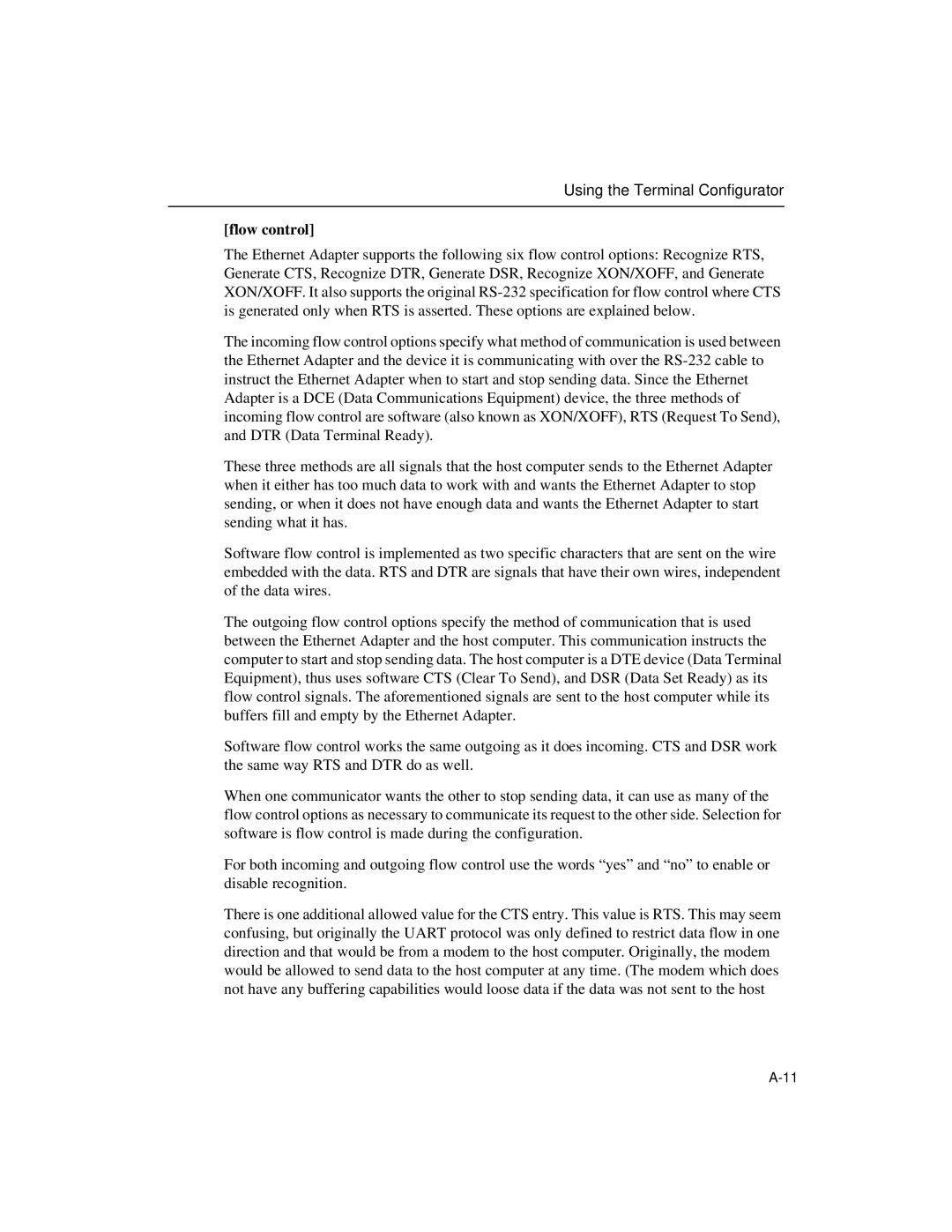Using the Terminal Configurator
[flow control]
The Ethernet Adapter supports the following six flow control options: Recognize RTS, Generate CTS, Recognize DTR, Generate DSR, Recognize XON/XOFF, and Generate XON/XOFF. It also supports the original
The incoming flow control options specify what method of communication is used between the Ethernet Adapter and the device it is communicating with over the
These three methods are all signals that the host computer sends to the Ethernet Adapter when it either has too much data to work with and wants the Ethernet Adapter to stop sending, or when it does not have enough data and wants the Ethernet Adapter to start sending what it has.
Software flow control is implemented as two specific characters that are sent on the wire embedded with the data. RTS and DTR are signals that have their own wires, independent of the data wires.
The outgoing flow control options specify the method of communication that is used between the Ethernet Adapter and the host computer. This communication instructs the computer to start and stop sending data. The host computer is a DTE device (Data Terminal Equipment), thus uses software CTS (Clear To Send), and DSR (Data Set Ready) as its flow control signals. The aforementioned signals are sent to the host computer while its buffers fill and empty by the Ethernet Adapter.
Software flow control works the same outgoing as it does incoming. CTS and DSR work the same way RTS and DTR do as well.
When one communicator wants the other to stop sending data, it can use as many of the flow control options as necessary to communicate its request to the other side. Selection for software is flow control is made during the configuration.
For both incoming and outgoing flow control use the words “yes” and “no” to enable or disable recognition.
There is one additional allowed value for the CTS entry. This value is RTS. This may seem confusing, but originally the UART protocol was only defined to restrict data flow in one direction and that would be from a modem to the host computer. Originally, the modem would be allowed to send data to the host computer at any time. (The modem which does not have any buffering capabilities would loose data if the data was not sent to the host
